Venice Architecture Biennale 2021: a year late but somehow right on time
Hashim Sarkis' main show ‘How Will We Live Together?' at the 2021 Venice Architecture Biennale opens a year later than originally expected, but ponders on questions that are more timely than ever
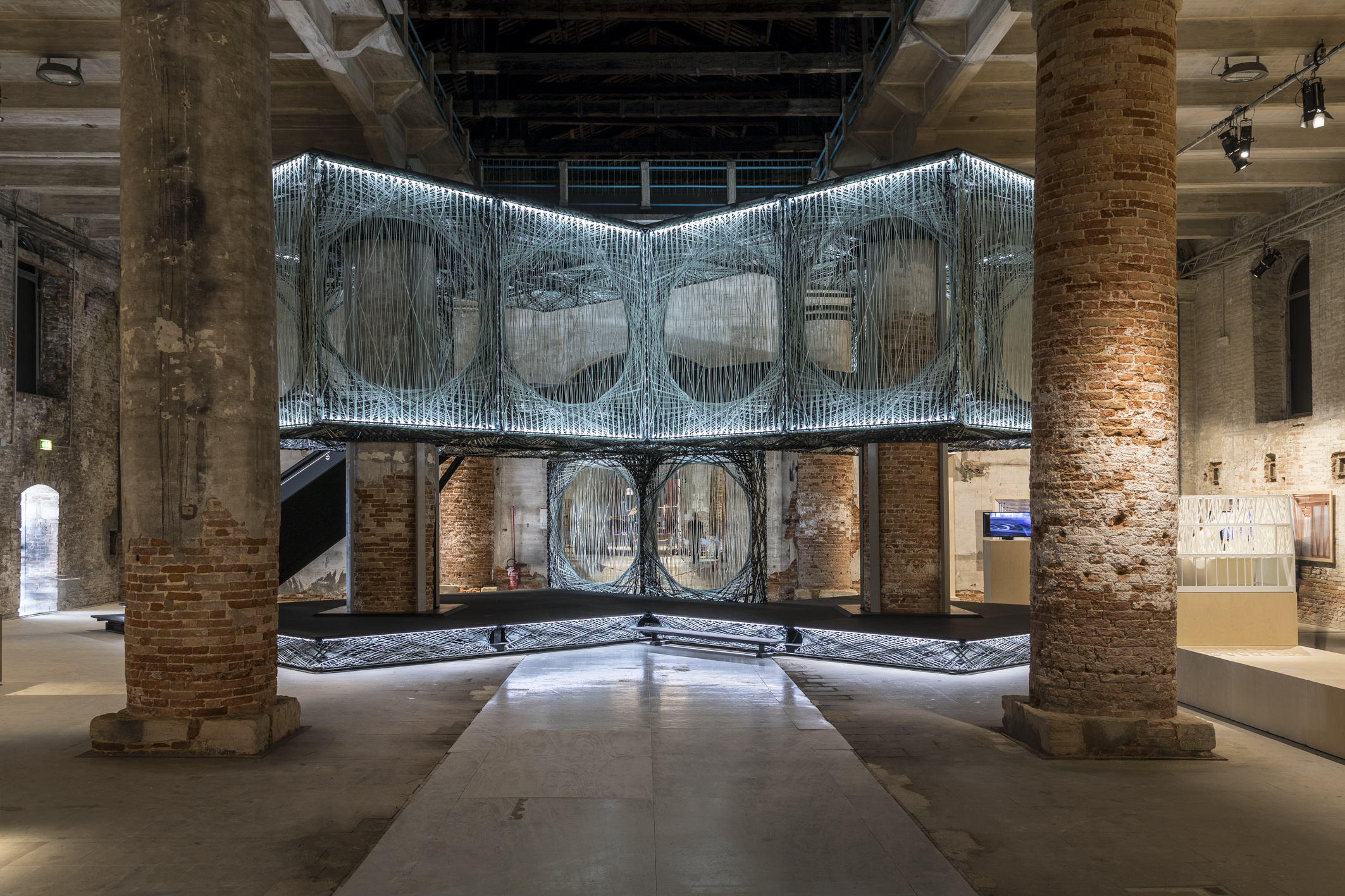
Venice in the pandemic is a different city, a quiet place with children playing in the narrow streets, families dining outside and an empty St. Mark’s Square. Despite this, as the 17th Venice Architecture Biennale, curated by Hashim Sarkis, prepared to open to the public there was the sense of something undoubtedly special; an international coming together at a time when many of us have to remain within borders.
How Will We Live Together?
Sarkis' biennale has been postponed twice. Finally opening on 22 May 2021, the Professor and Dean of the School of Architecture and Planning at MIT and founder of Hashim Sarkis Studio posed the question How Will We Live Together?
The theme has only gained resonance as the world has been forced to come together to find solutions or suffer the direst of consequences. The show offered answers to this question, ‘As Diverse Bodies', ‘As New Households', ‘As Emerging Communities’ looking at social theory, forgotten craft combined with technological innovation and the speculative, even interplanetary.
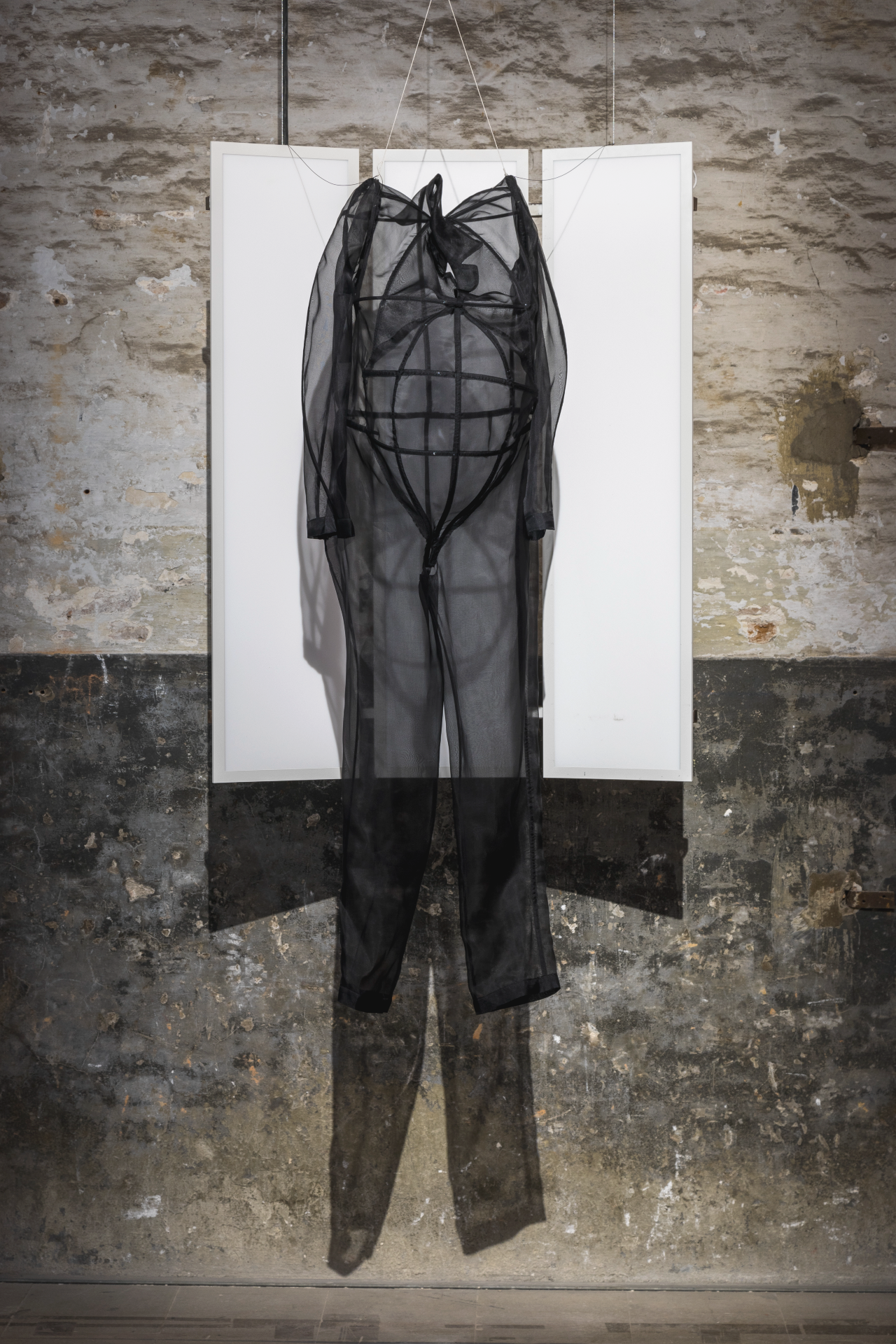
A. I. Toys Shapes and Ladders: Battles of Bias and Bureaucracy Maternity Menswear, 2020. courtesy: La Biennale di Venezia
How are we to live alongside one another if we do not consider what makes each of us uniquely diverse? In As Diverse Bodies, Sarkis proposes design for new bodies in the shape of a male maternity suit for trans men by artist Ani Liu. This sits alongside the installation Your Restroom is a Battleground, by Matilde Cassani, Ignacio G. Galán and Iván L. Munuera, which tackles issues of the fundamental rights around private, public and shared toilet facilities around the world from trans rights to sanitation. If we don’t accept our diverse needs on this fundamental level when it comes to the spaces we use and inhabit, how are we to co-exist harmoniously?
He then looks at another aspect of the architecture of our bodies, their biology. By presenting the biological systems alongside technological ones Hashim Sarkis looks at them not as opposing forces but as complementary and intertwined. Magic Queen by interdisciplinary architecture and transmedia practice MAEID’s is an ‘autonomous techno-organic environment', an evolving landscape resembling something between a huge anthill and a fantasy planetary landscape sits next to the satirical work by Tim Parsons and Jessica Charlesworth Catalog for the Post Human which includes imagined objects such as a daily micro dosing kit.
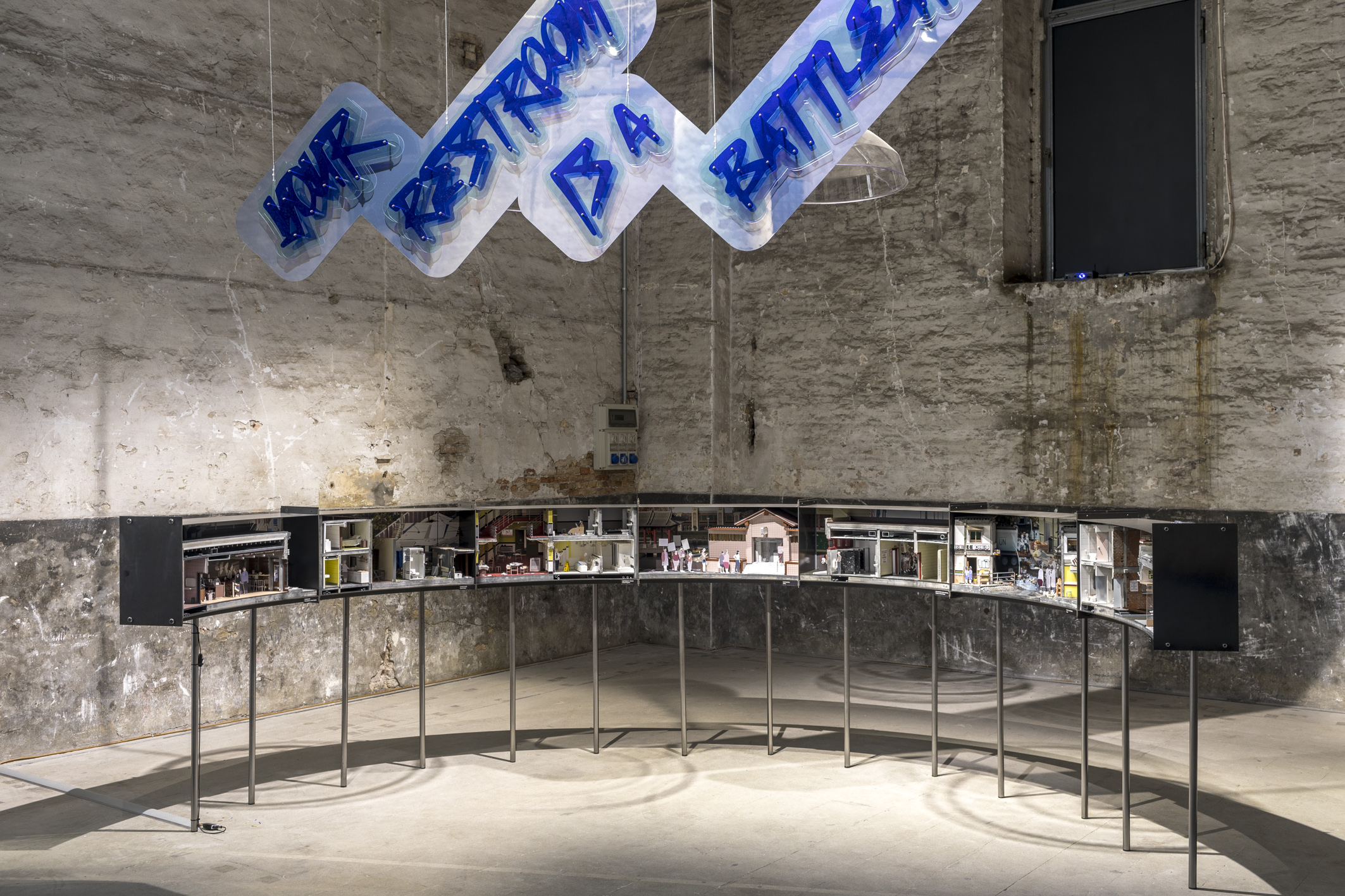
Matilde Cassani; Ignacio G. Galán; Ivan L. Munuera; Joel Sanders;Your Restroom is a Battleground, 2021. courtesy: La Biennale di Venezia
Working from the inside outwards we move from the architecture of our bodies onto our households, kicking off with changing demographics. The exhibition is deliberately diverse not solely out of a desire to be inclusive but because, in Sarkis’ eyes, the greatest innovations in architecture are no longer solely coming out of The West in our post-internet world. He highlights this with KEJA by Osbourne Macharia, inspired by the millennial creatives working out of slums in Nairobi, facilitated by internet access.
New takes on old ideas
Taking into consideration the post-internet and the post-human Sarkis also takes on the post-biological or should we say super-biological. The biennale overall explores the potential for new takes on old ideas; this could be a return to using timber or a new climate conscious material using an old modular housing model. While there is an eye on the past, when Hashim Sarkis looks to the future it is always with an ambition for a cohesive, universal approach.
In As Emerging Communities Rolex alumni Atelier Masomi explores how colonial systems can be adapted for a more equal present and future – Rolex is also once again exclusive partner and official timepiece for the event, and have a separate pavilion at the Giardini park (it hosts an exhibition focusing on Atelier Masomi founder Mariam Kamara’s plans for a cultural centre in Niamey, Niger).
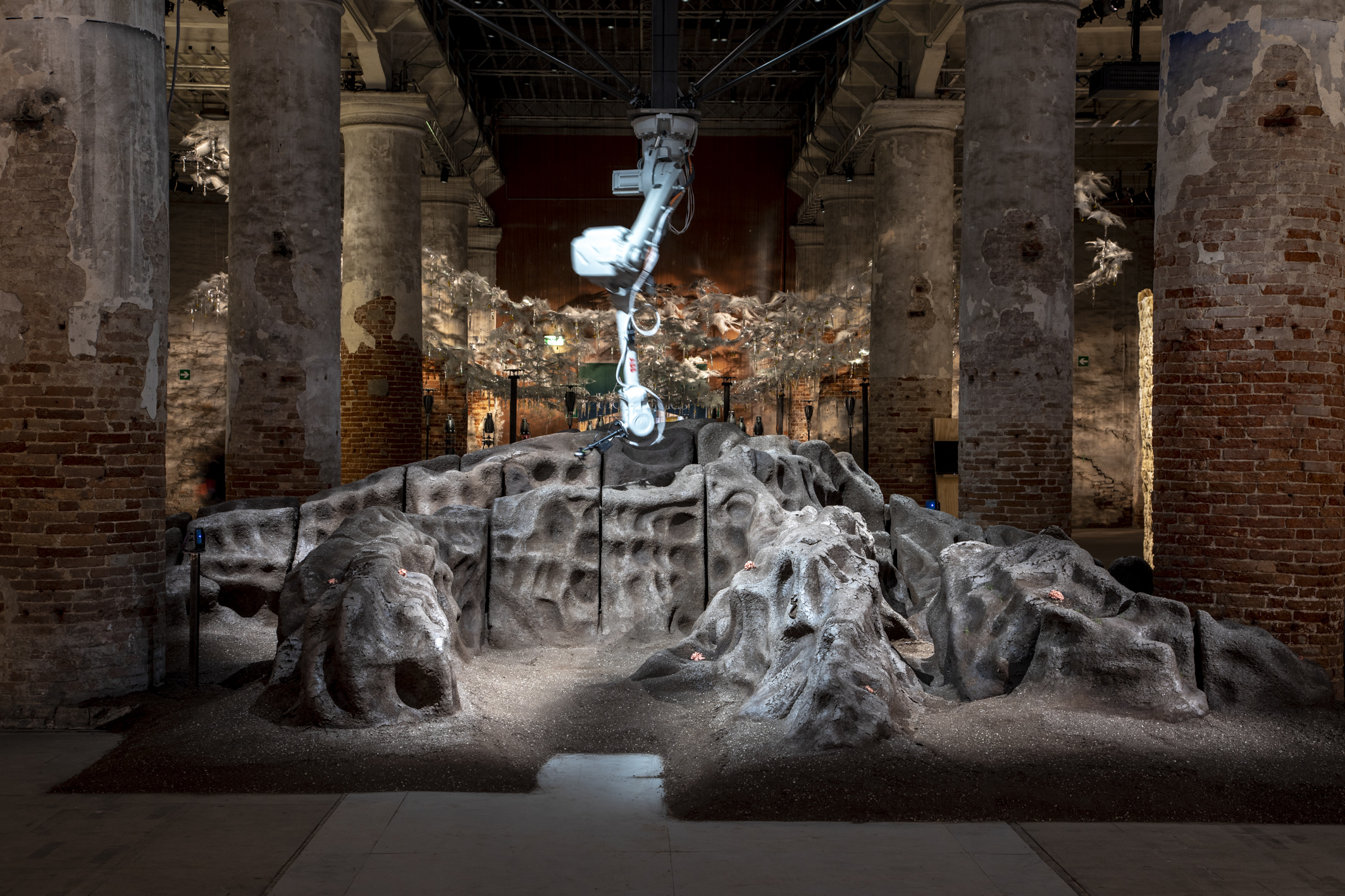
MAEID [Büro für Architektur und transmediale Kunst], Magic Queen [from the Artificial Ecologies series], 2021. courtesy: La Biennale di Venezia
The pandemic: an enforced stop
In another section, he asks us to Inhabit New Tectonics. Refuge for Resurgence by Superflux touches on the impact of the enforced stop of the pandemic and using a dining table as its centerpiece looks at opportunities for coexistence in a post-Anthropocene world. It was essential that Sarkis mix the aspirational with the realised to root the narrative of the exhibition in the context of its theme of togetherness.
One of the most impressive of these projects is Los Angeles’ Sixth Street ‘Ribbon of Light' viaduct replacement in Appealing to Civicness which, when finished promises to alter the city for the better in myriad ways. The exhibition also features the Lot 19 Residential Block, La Défense-Nanterre in Paris by Farshid Moussavi Architects as part of ‘Living Apart Together', a film exploring the impact of the building’s architecture on the community that lives there. Built in a sought-after area of Paris, the building is a mix of highly priced and affordable homes and in its success in many ways exemplifies Sarkis’ philosophy.
Our relationships with our mental and physical health are changing and in combining traditional medicine with technological advancement we are gaining a greater understanding of internationally diverse viewpoints. This need for unity is urgently stated in this exhibition which, without a firm grounding in actuality, would have lost itself in theory and speculation. However, what Sarkis presents is a combination of our radically changing approach to life, a mixture of ancient and modern with an aspirational eye on the future.
Wallpaper* Newsletter
Receive our daily digest of inspiration, escapism and design stories from around the world direct to your inbox.
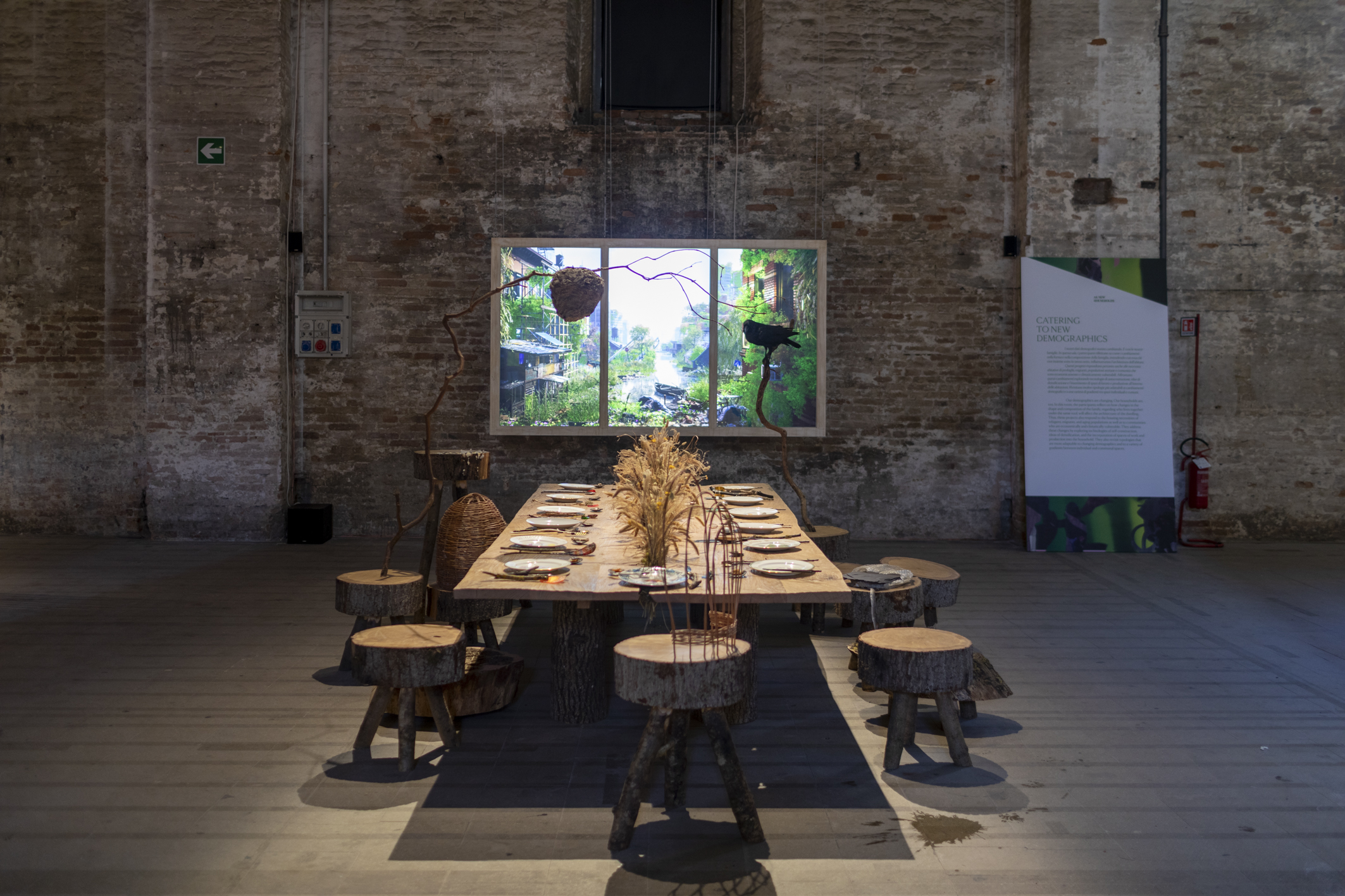
Superflux London, Refuge for Resurgence, 2021. courtesy: La Biennale di Venezia
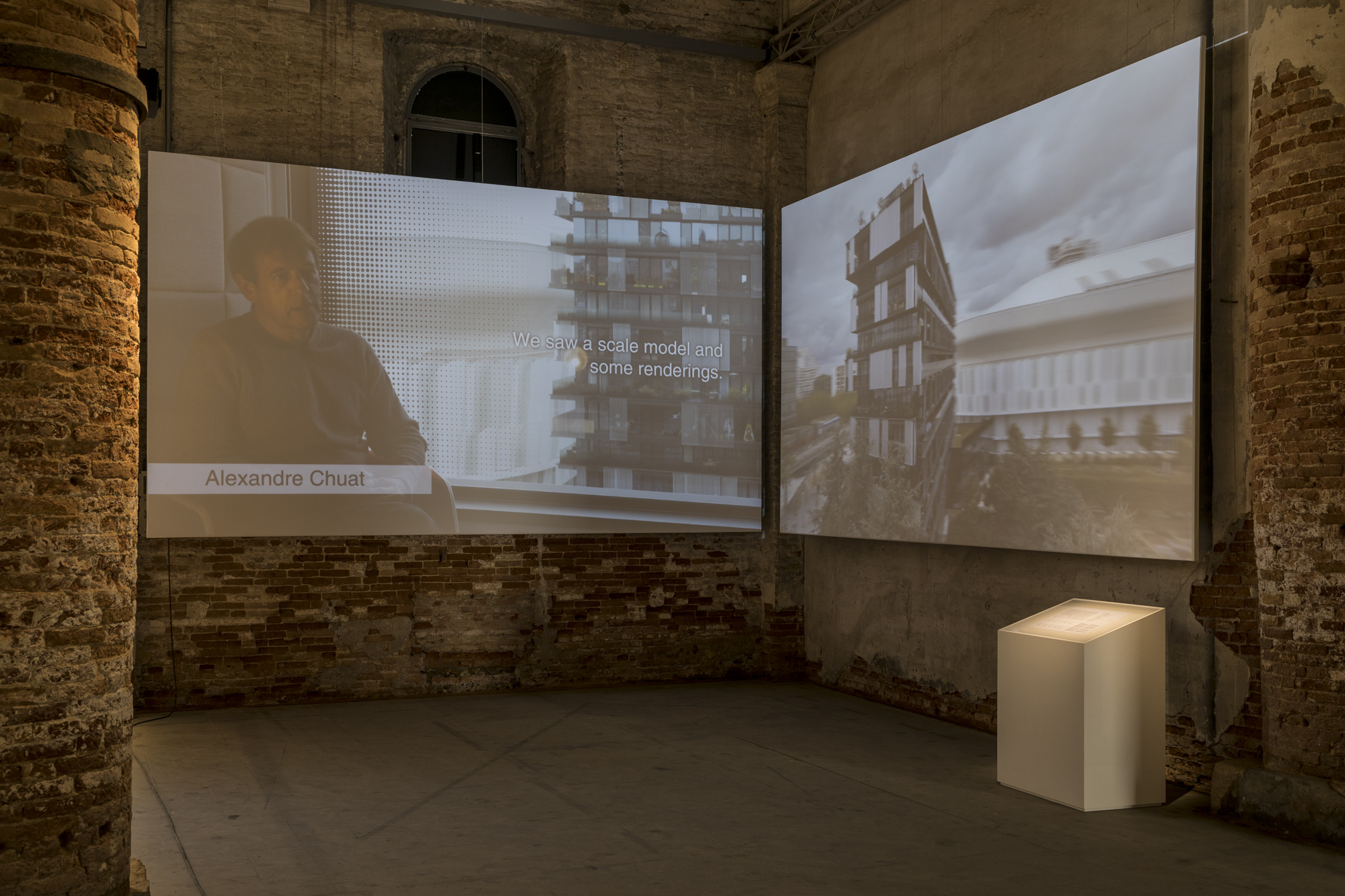
Farshid Moussavi Architecture, The Multistory Residential Block as a Social Platform, 2021. courtesy: La Biennale di Venezia
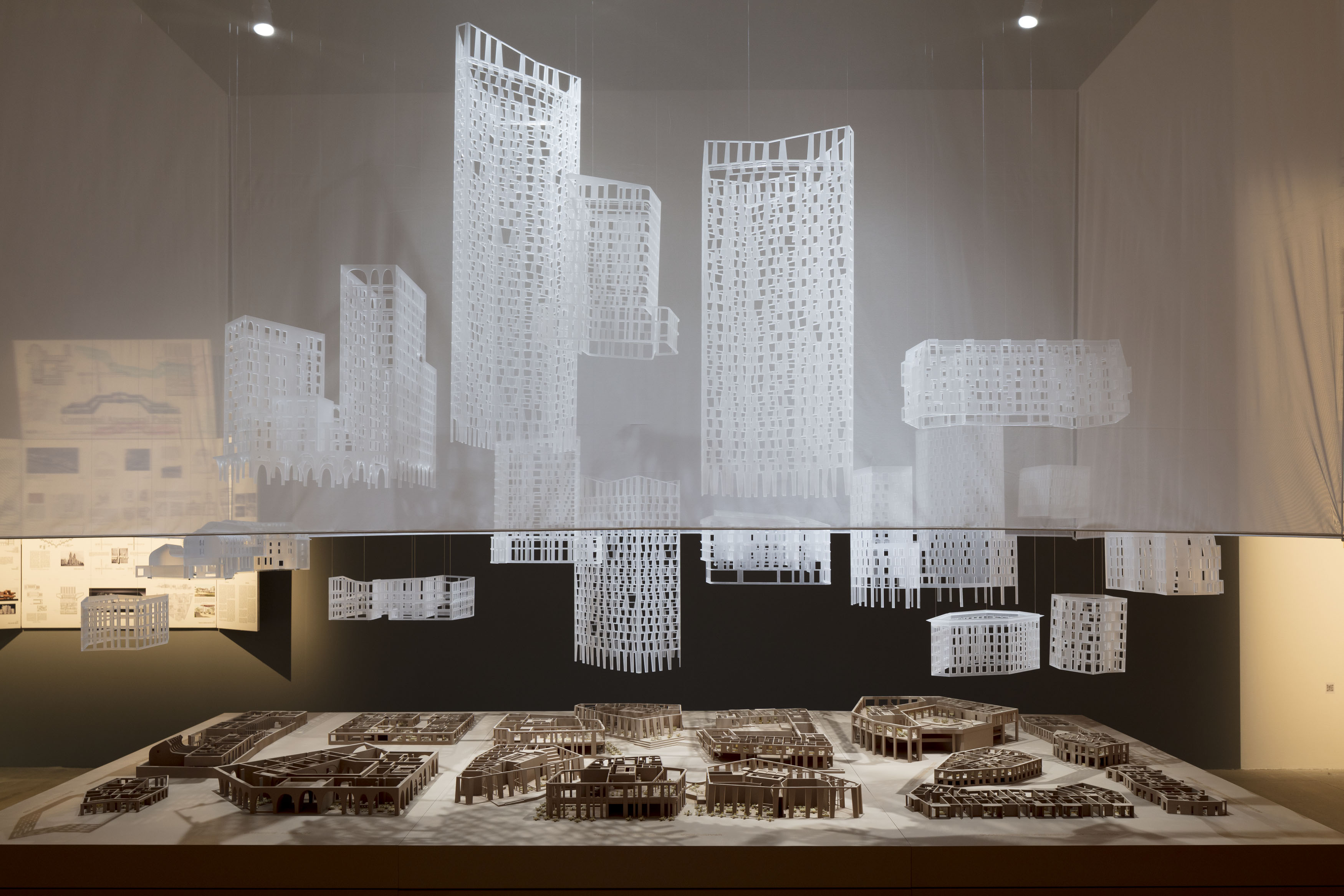
Alison Brooks', Home Ground, a monumental table into which sixteen architectural models are cast as a participatory ‘conversation piece’
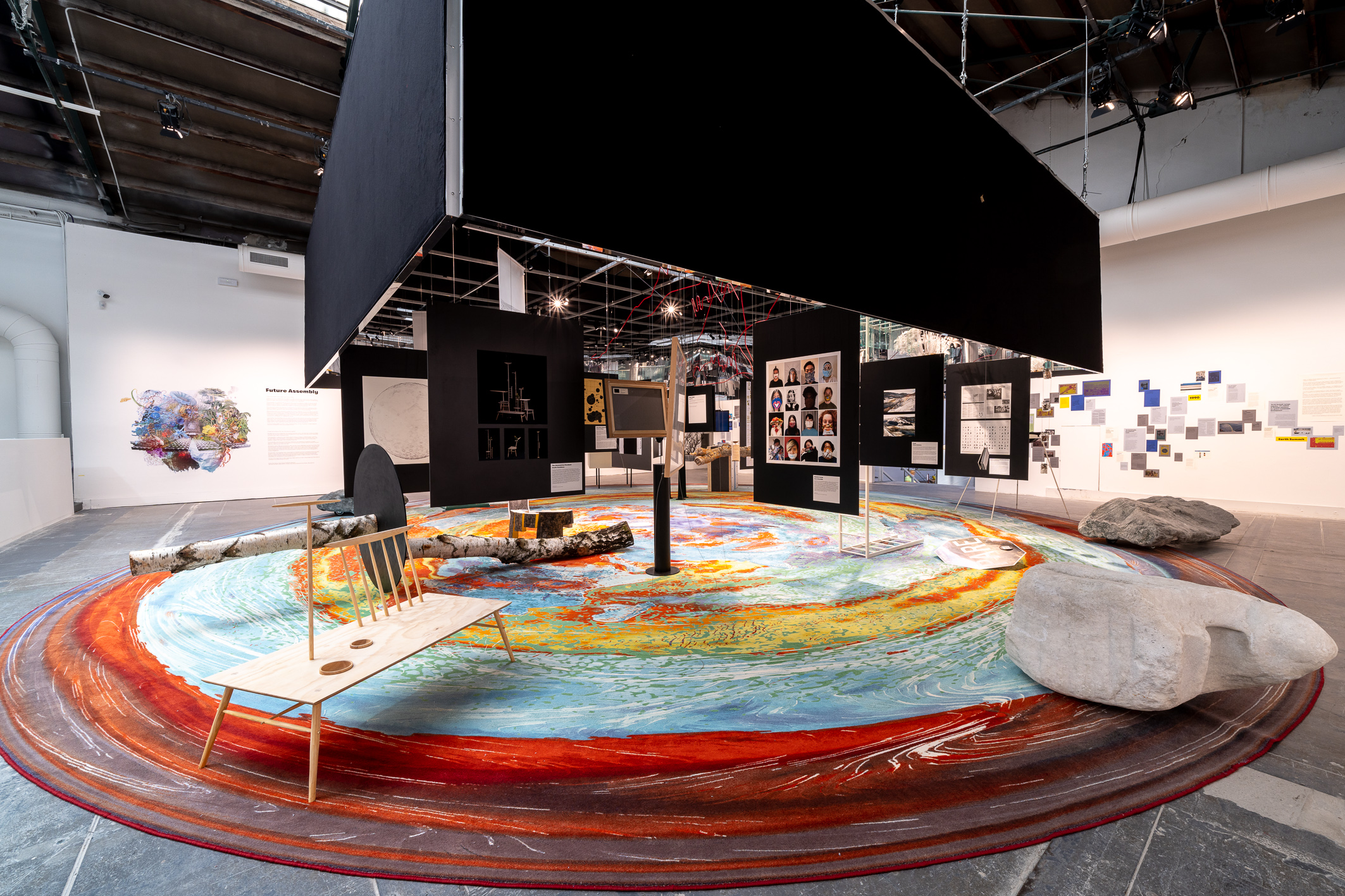
Future Assembly is a collective exhibition in the Central Pavilion, Giardini, which is part of the main show. It is a collaboration between artist Olafur Eliasson and architect Sebastian Behmann’s Studio Other Spaces and six co-designers. The installations explore the answer to the question: What could a multilateral assembly of the future look like? courtesy La Biennale di Venezia
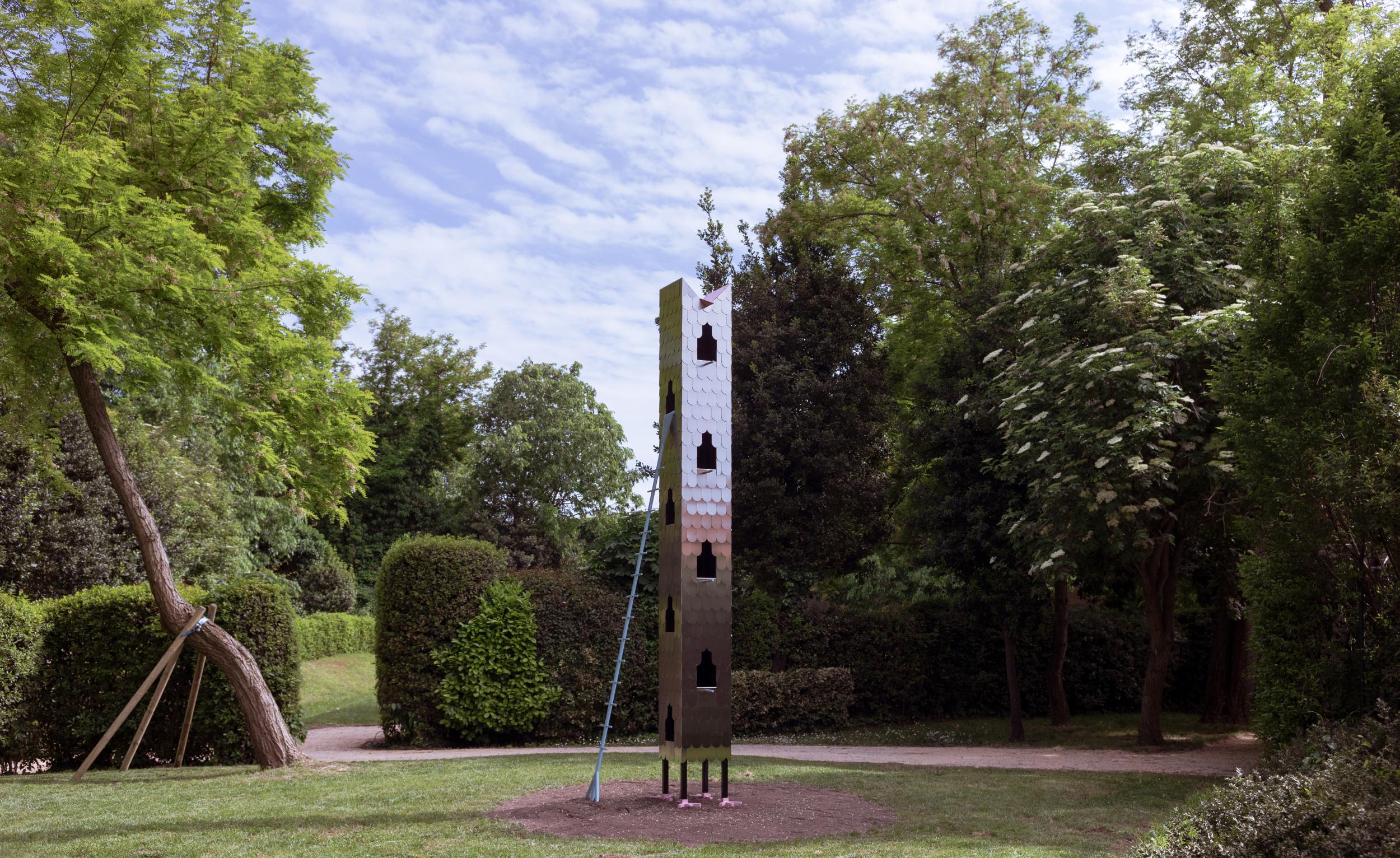
Studio Ossidiana created Variations on a Birdcage, an exploration of the objects through which humans formalize their encounters with birds.
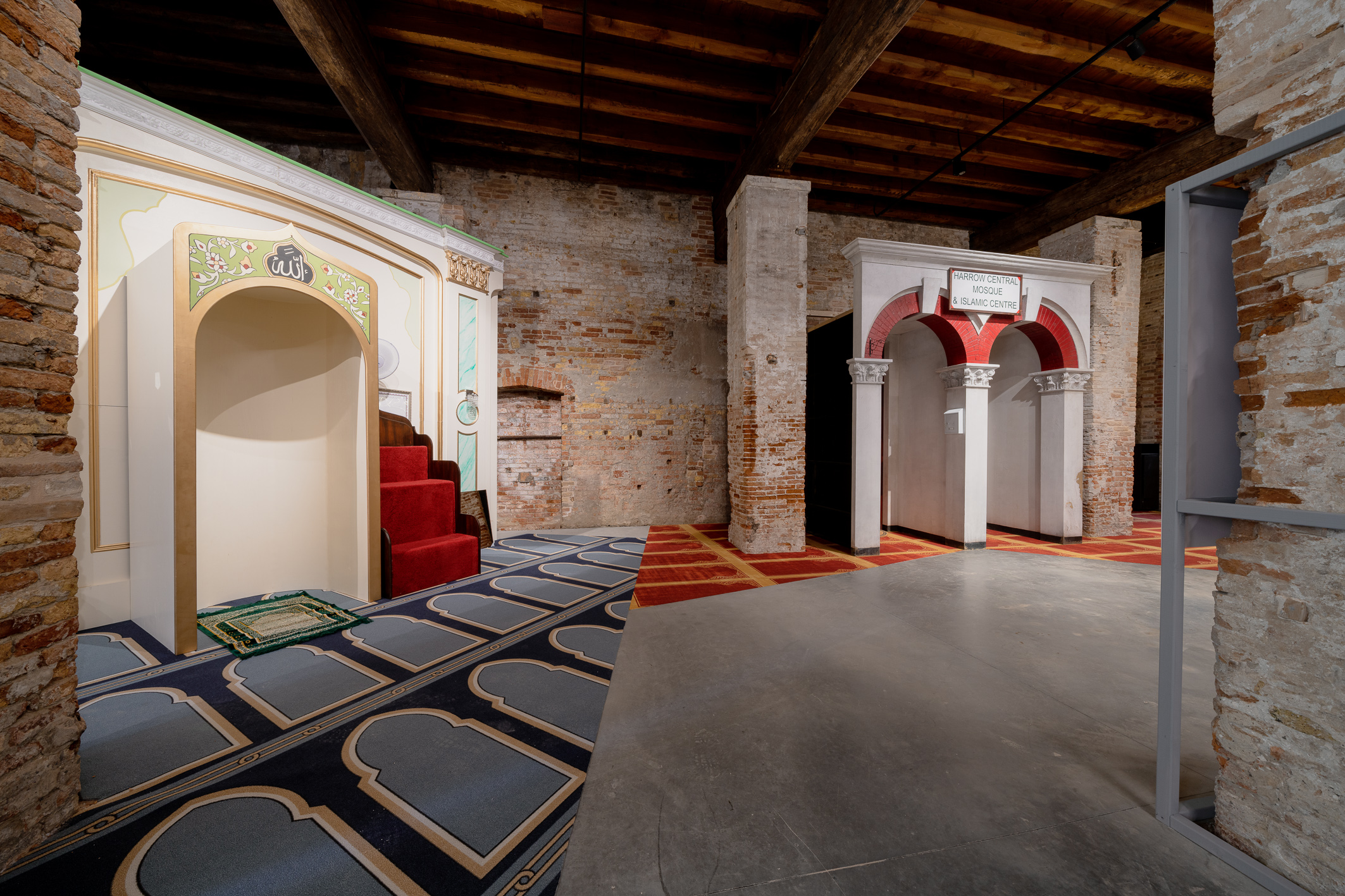
Three British Mosques, Applied Arts Pavilion Special Project at the Biennale Architettura 2021. courtesy La Biennale di Venezia
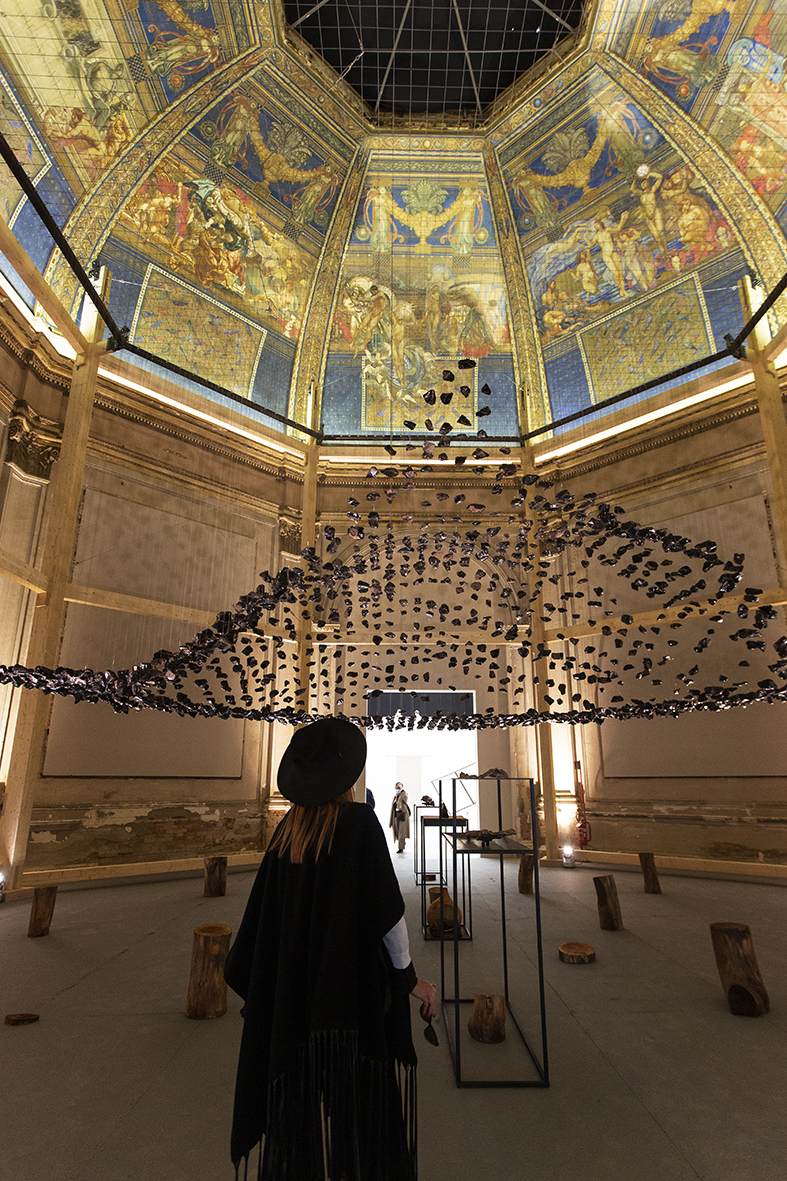
Cave_bureau, The Anthropocene Museum: Exhibit 3.0 Obsidian Rain, 2017, courtesy: La Biennale di Venezia
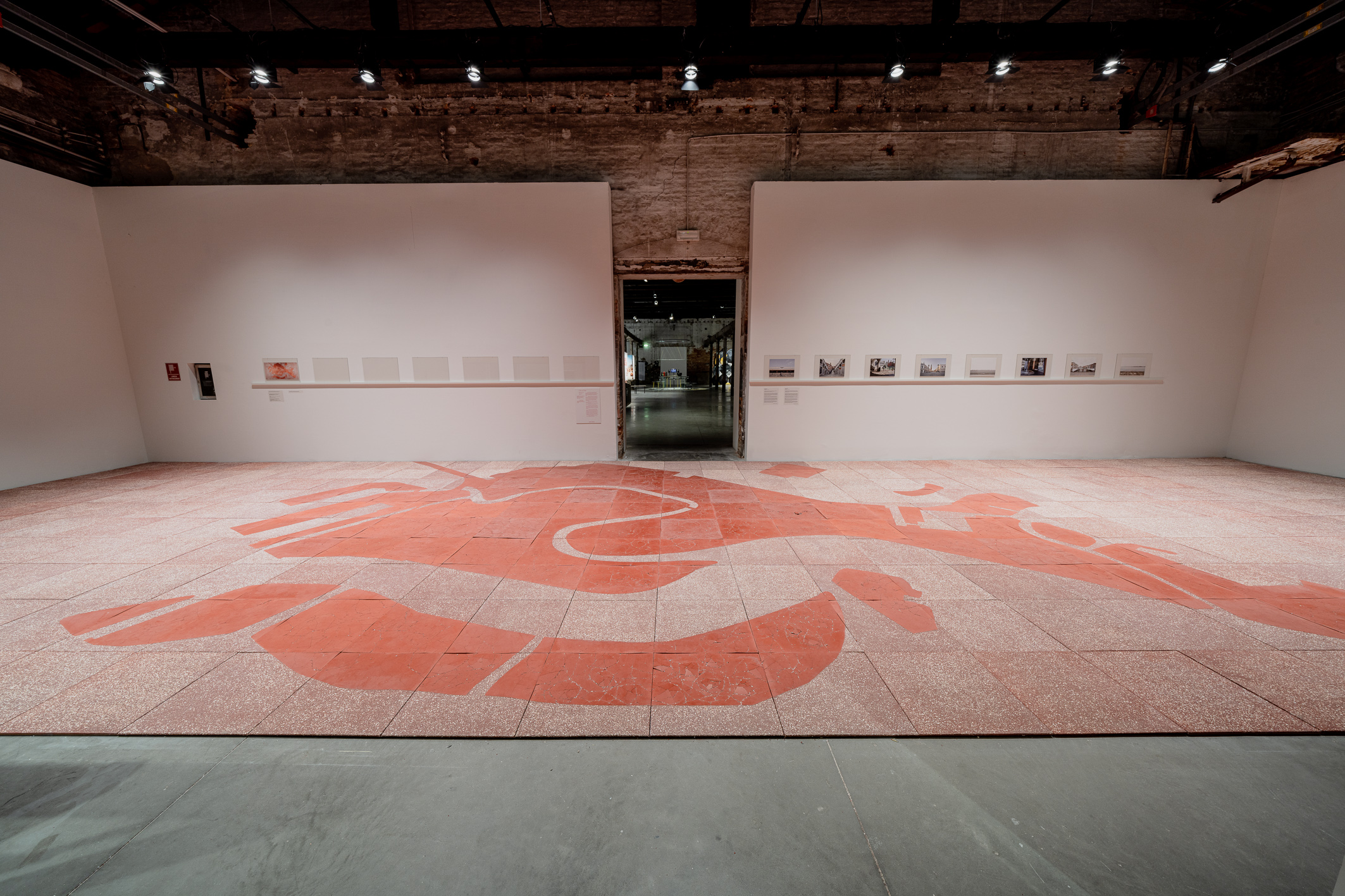
studio L A, City to Dust, 2020–2021. courtesy La Biennale di Venezia
INFORMATION
Amah-Rose Abrams is a British writer, editor and broadcaster covering arts and culture based in London. In her decade plus career she has covered and broken arts stories all over the world and has interviewed artists including Marina Abramovic, Nan Goldin, Ai Weiwei, Lubaina Himid and Herzog & de Meuron. She has also worked in content strategy and production.
-
 All-In is the Paris-based label making full-force fashion for main character dressing
All-In is the Paris-based label making full-force fashion for main character dressingPart of our monthly Uprising series, Wallpaper* meets Benjamin Barron and Bror August Vestbø of All-In, the LVMH Prize-nominated label which bases its collections on a riotous cast of characters – real and imagined
By Orla Brennan
-
 Maserati joins forces with Giorgetti for a turbo-charged relationship
Maserati joins forces with Giorgetti for a turbo-charged relationshipAnnouncing their marriage during Milan Design Week, the brands unveiled a collection, a car and a long term commitment
By Hugo Macdonald
-
 Through an innovative new training program, Poltrona Frau aims to safeguard Italian craft
Through an innovative new training program, Poltrona Frau aims to safeguard Italian craftThe heritage furniture manufacturer is training a new generation of leather artisans
By Cristina Kiran Piotti
-
 Meet Lisbeth Sachs, the lesser known Swiss modernist architect
Meet Lisbeth Sachs, the lesser known Swiss modernist architectPioneering Lisbeth Sachs is the Swiss architect behind the inspiration for creative collective Annexe’s reimagining of the Swiss pavilion for the Venice Architecture Biennale 2025
By Adam Štěch
-
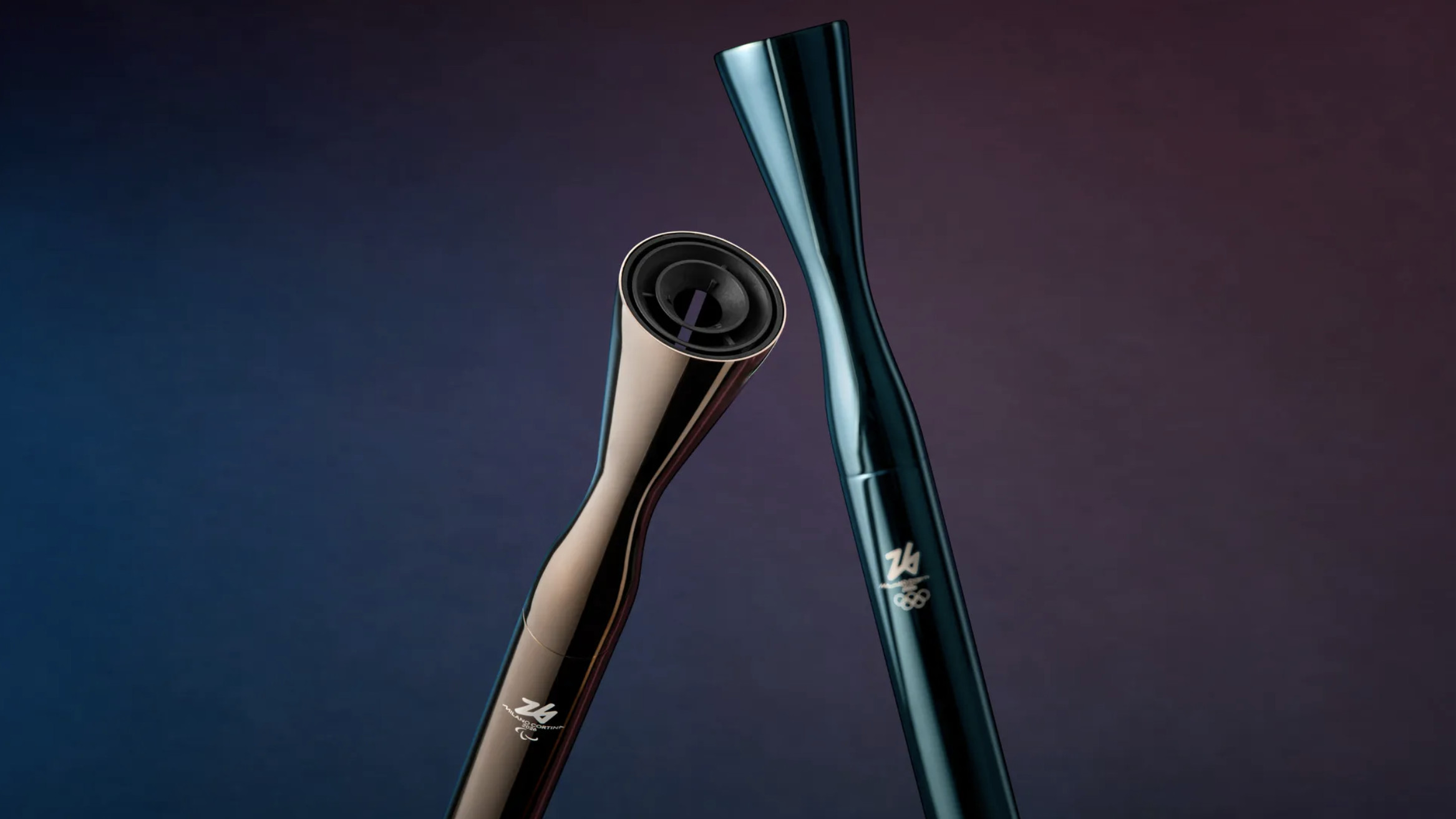 2026 Olympic and Paralympic Torches: in Carlo Ratti's minimalism ‘the flame is the protagonist’
2026 Olympic and Paralympic Torches: in Carlo Ratti's minimalism ‘the flame is the protagonist’The 2026 Olympic and Paralympic Torches for the upcoming Milano Cortina Games have been revealed, designed by architect Carlo Ratti to highlight the Olympic flame
By Ellie Stathaki
-
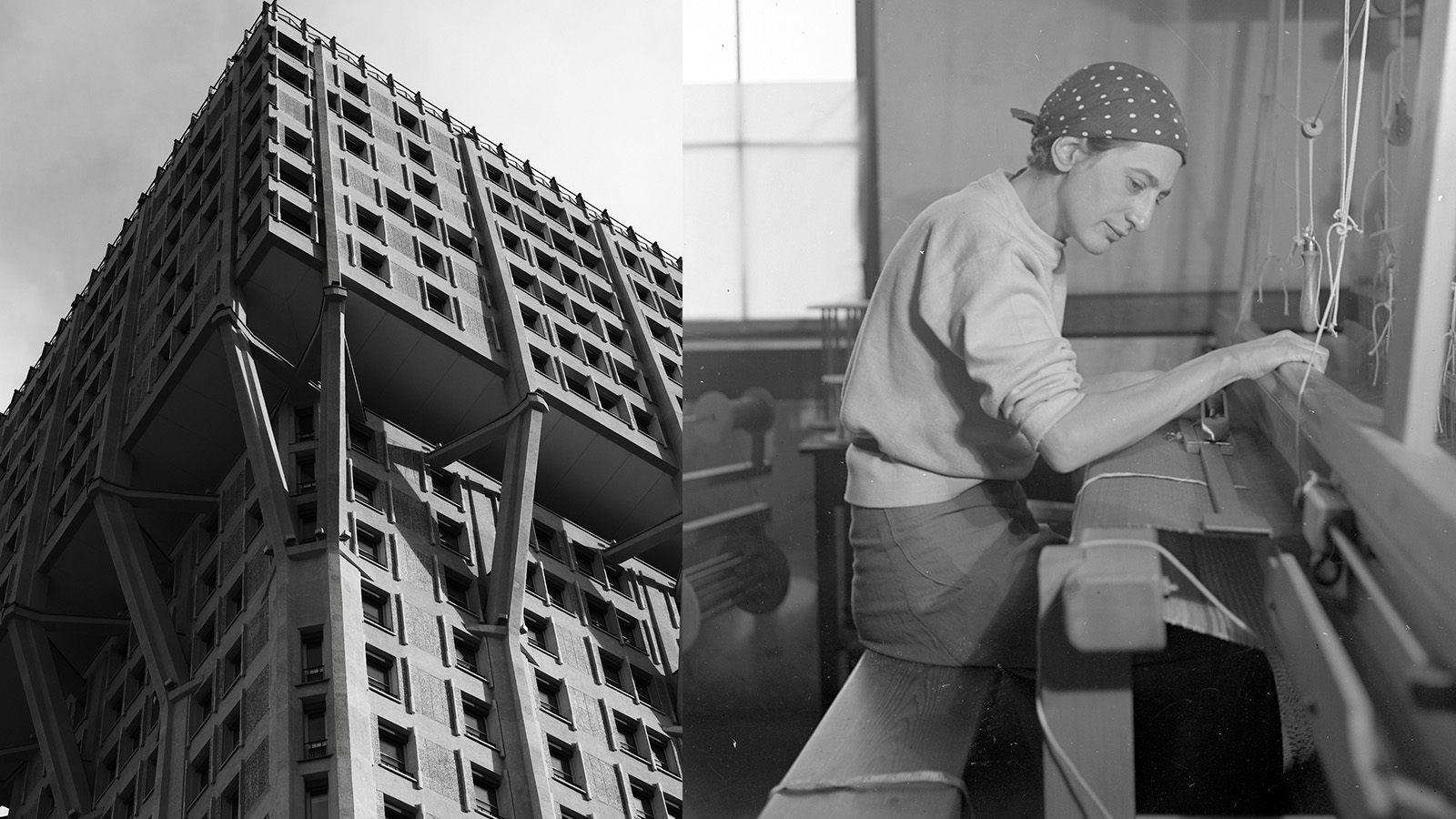 Anni Albers' weaving magic offers a delightful 2-in-1 modernist showcase in Milan
Anni Albers' weaving magic offers a delightful 2-in-1 modernist showcase in MilanA Milan Design Week showcase of Anni Albers’ weaving work, brought to life by Dedar with the Josef & Anni Albers Foundation, brings visitors to modernist icon, the BBPR-designed Torre Velasca
By Ellie Stathaki
-
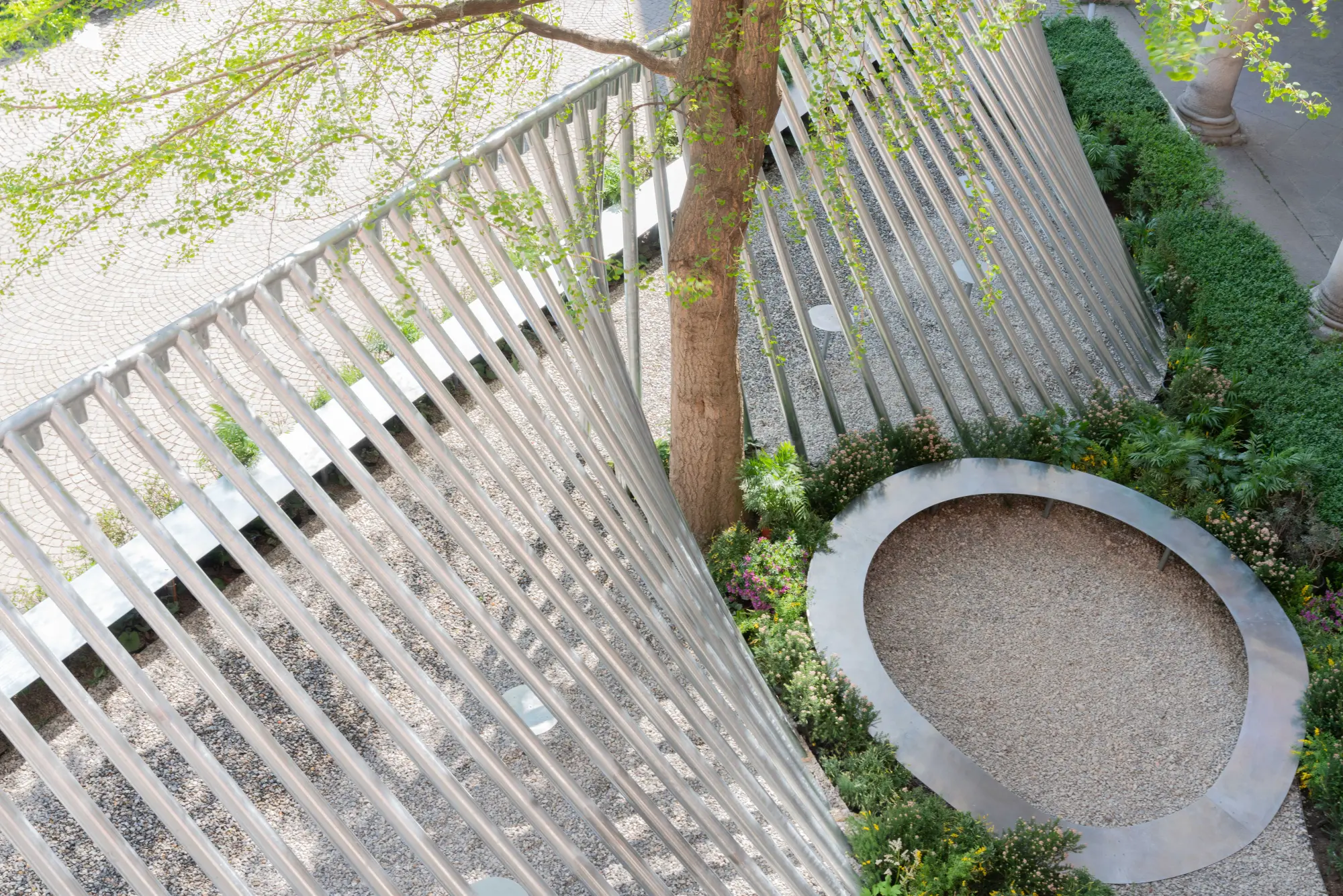 Milan Design Week: ‘A Beat of Water’ highlights the power of the precious natural resource
Milan Design Week: ‘A Beat of Water’ highlights the power of the precious natural resource‘A Beat of Water’ by BIG - Bjarke Ingels Group and Roca zooms in on water and its power – from natural element to valuable resource, touching on sustainability and consumption
By Ellie Stathaki
-
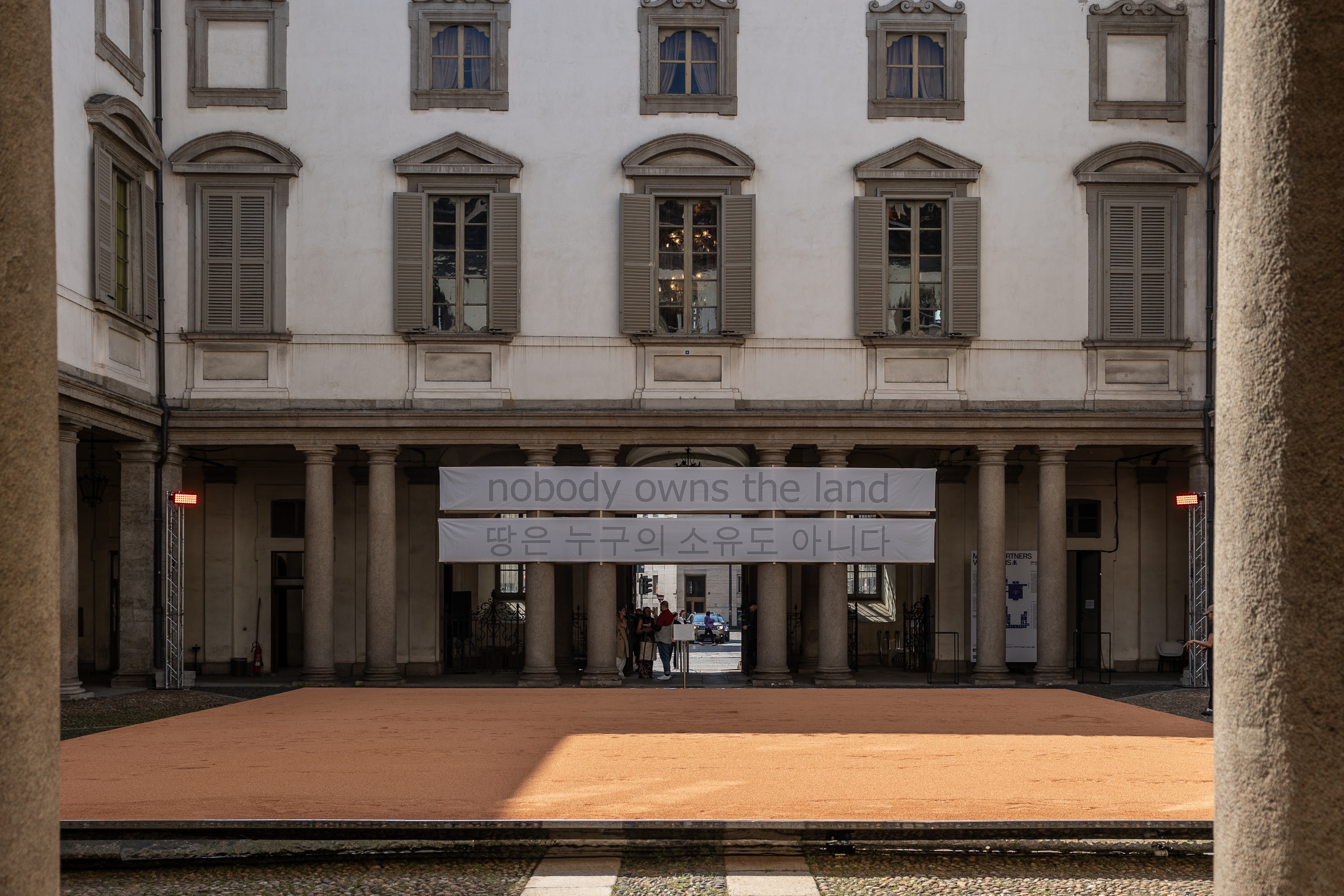 This Milan Design Week installation invites you to tread barefoot inside a palazzo
This Milan Design Week installation invites you to tread barefoot inside a palazzoAt Palazzo Litta, Moscapartners and Byoung Cho launch a contemplative installation on the theme of migration
By Ellie Stathaki
-
 The upcoming Zaha Hadid Architects projects set to transform the horizon
The upcoming Zaha Hadid Architects projects set to transform the horizonA peek at Zaha Hadid Architects’ future projects, which will comprise some of the most innovative and intriguing structures in the world
By Anna Solomon
-
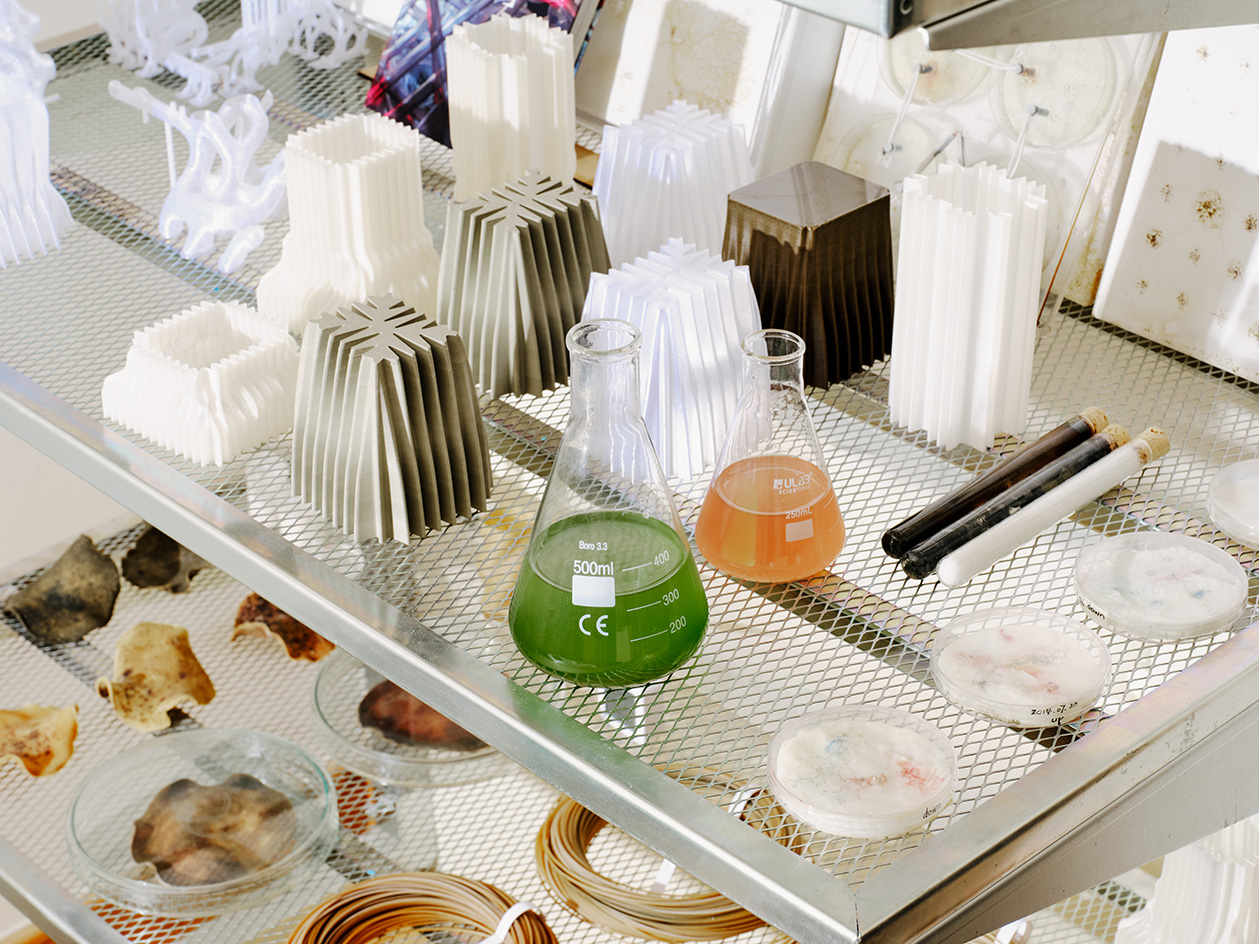 Is biodesign the future of architecture? EcoLogicStudio thinks so
Is biodesign the future of architecture? EcoLogicStudio thinks soWe talk all things biodesign with British-Italian architecture practice ecoLogicStudio, discussing how architecture can work with nature
By Shawn Adams
-
 Meet Carlo Ratti, the architect curating the 2025 Venice Architecture Biennale
Meet Carlo Ratti, the architect curating the 2025 Venice Architecture BiennaleWe meet Italian architect Carlo Ratti, the curator of the 2025 Venice Architecture Biennale, to find out what drives and fascinates him ahead of the world’s biggest architecture festival kick-off in May
By Ellie Stathaki